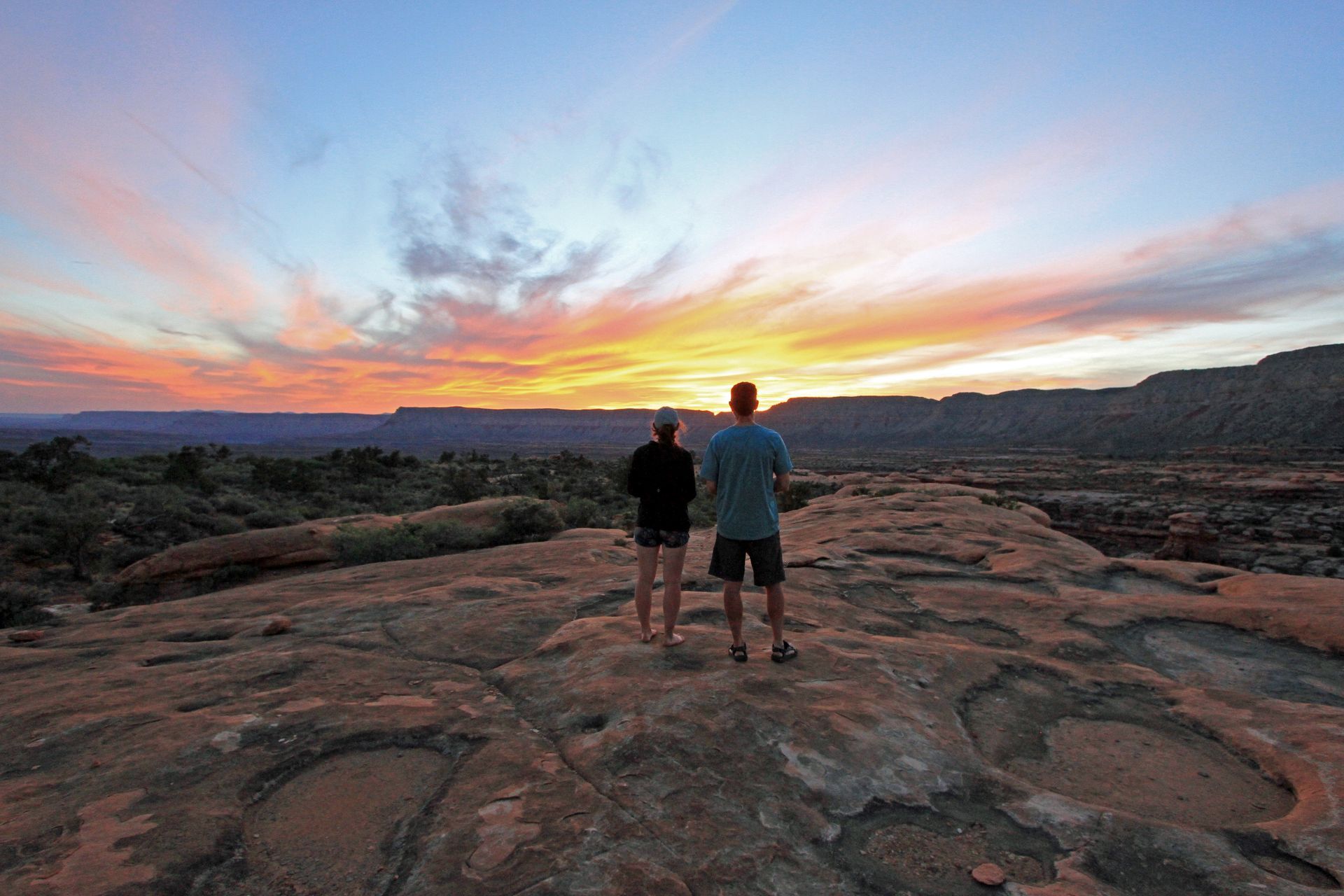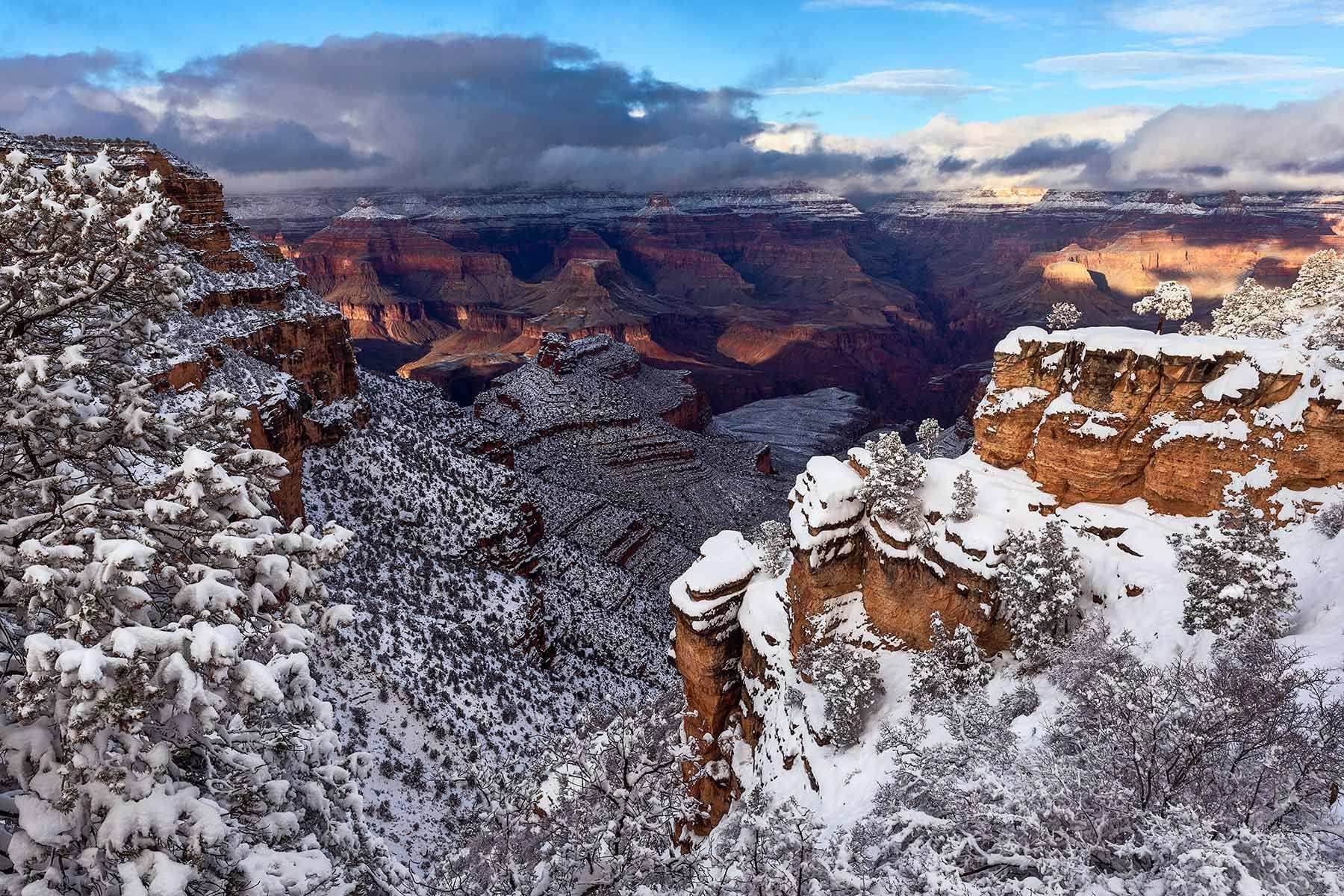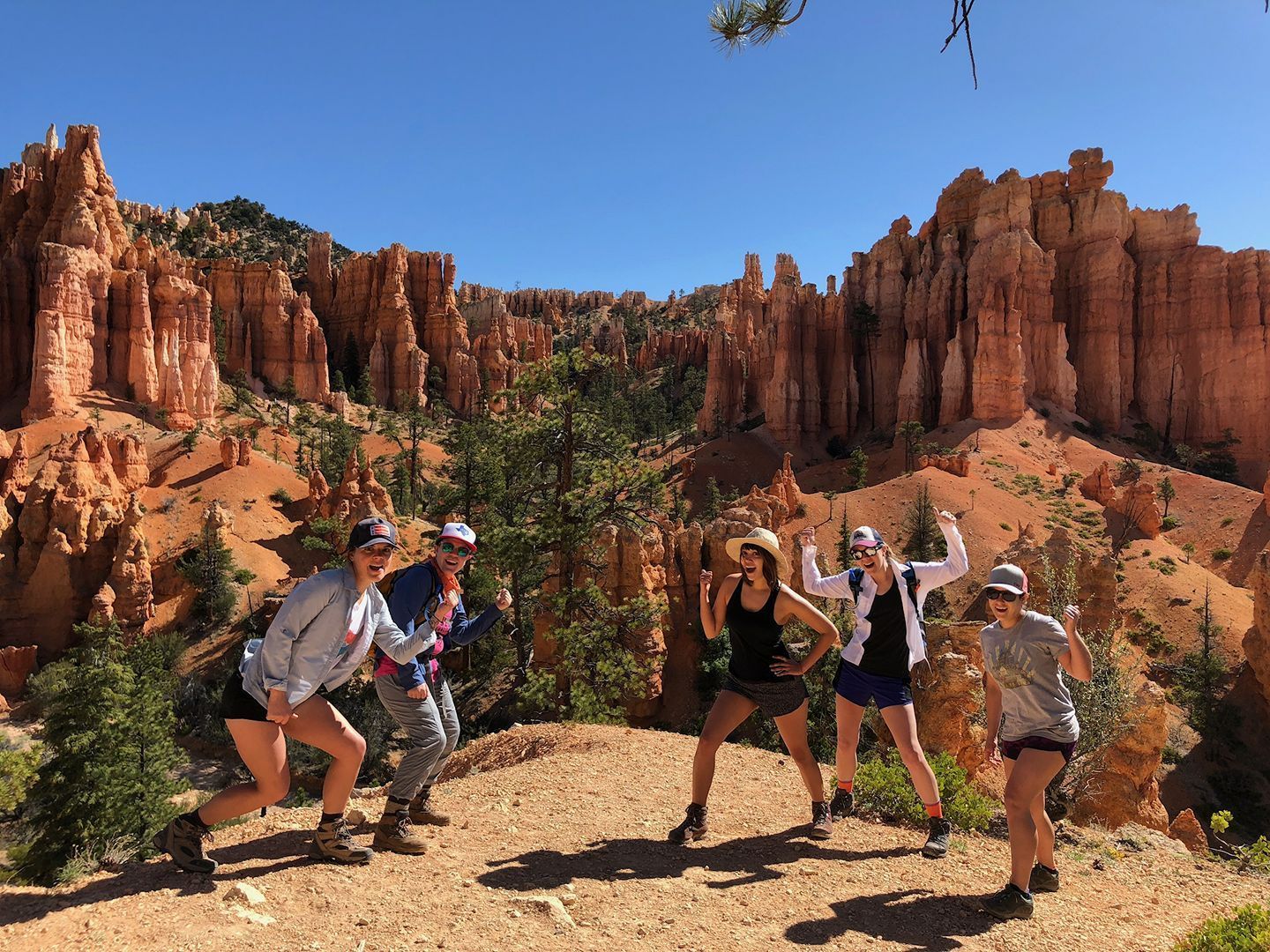Beat the Heat: Essential Tips for Hiking in Arizona and Southern Utah
If you’re planning to hit the trails in the
sun-soaked deserts of Arizona and Southern Utah this summer, you’re in for some amazing scenery and thrilling experiences. If you’re drawn to iconic routes, explore our
Grand Canyon hikes for inspiration before planning your next adventure. Hiking in hot weather isn’t just a walk in the park—there are dangers if you aren’t prepared. Here are essential tips to help you beat the heat and make the most of your desert hiking adventure.
Key Takeaways
- Hydration is critical for desert hiking in Arizona and Utah — drink at least one liter per hour and balance fluids with electrolytes to prevent dehydration and cramps.
- Plan your hikes around cooler hours — start early or go at dusk to avoid the peak desert sun between 10 AM and 4 PM for a safer, more enjoyable trek.
- Dress strategically for the heat — wear lightweight, moisture-wicking, and UV-protective clothing in light colors, along with a wide-brimmed hat and sunglasses.
- Use strong sun protection — apply SPF 30+ sunscreen before hiking, reapply every two hours, and seek or create shade during rest breaks.
- Know the warning signs of heat exhaustion and heat stroke — dizziness, nausea, or confusion signal danger; act quickly to cool down or seek emergency help.
- Preparation ensures safety and enjoyment — plan routes, pack an emergency kit, and inform someone of your location before hitting the trails in Arizona or Southern Utah.
1. Hydration is Your Best Friend
Why Hydration Matters
Hydration when hiking is crucial in hot environments. Dehydration can lead to serious health issues, including heat exhaustion and heat stroke. The dry desert air in Arizona in summer can cause you to lose more moisture than you realize, so it’s vital to drink plenty of water before, during, and after your hike.
How Much Water Should You Carry?
Aim to drink at least one liter of water per hour of hiking. For a full-day hike, this could mean carrying 3-4 liters of water per person. Consider using a hydration bladder, which fits into your backpack and allows you to sip water hands-free. It’s also lighter and easier to manage than carrying multiple water bottles during a hot hike.
Water Sources and Purification
While some trails may have water sources, they can be unreliable or contaminated. Always bring a portable water filter or purification tablets. Check trail maps and guides for reliable water sources, but never depend solely on them. Many water sources dry up in the desert during summer in Arizona and many times are not usable.
Electrolytes are Key
When you sweat, you lose not only water but also electrolytes like sodium and potassium. These are crucial for muscle function and preventing cramps. Bring along some electrolyte tablets, powders, or sports drinks. They help replenish lost salts and keep your body functioning optimally. Many a hiker has taken the precautions of drinking a lot of water only to discover they were washing away their necessary electrolytes, which your body needs during a hot hike in the Arizona star heat.
Pro Tip: Camel Up
“Camel up” before you start your hike. This means drinking as much water as you can comfortably hold right before you hit the trail. This practice helps reduce the amount of water you need to carry and keeps you hydrated for the first part of your hike.
2. Timing is Everything
Start Early or Hike Late
The desert sun is most intense between 10 AM and 4 PM. Plan to start your hike at dawn to take advantage of the cooler morning temperatures. When does Arizona cool down? While desert nights are cooler, daytime temperatures can spike fast, even in Arizona in June.
Take Breaks During Peak Heat
If you find yourself hiking when it's hot out, take frequent breaks in shaded areas. Use this time to hydrate, snack, and cool down. Remember, it’s okay to rest often – your safety is more important than speed.
Night Hiking
For those who are more adventurous, night hiking can be an exhilarating experience. The temperatures drop significantly after sunset, and the desert comes alive with nocturnal wildlife. Make sure to bring a good headlamp, extra batteries, and familiarize yourself with the trail before setting out in the dark.

3. Dress for Success
Lightweight and Breathable Clothing
When it comes to summer hiking clothes, lightweight and breathable are the keywords. Choose moisture-wicking fabrics that help sweat evaporate quickly. Avoid cotton—why is cotton bad for hiking? It traps moisture and can cause chafing.
Light Colors Reflect Heat
Light-colored summer hiking outfits and clothing reflect the sun’s rays, keeping you cooler. Think whites, light blues, and tans instead of dark colors, which absorb heat.
Long Sleeves and Pants
While it might seem counterintuitive, long sleeves and pants provide better protection against the sun. Look for UV-protective clothing designed for sun exposure. They also help prevent scratches from plants and insect bites.
Wide-Brimmed Hat
A wide-brimmed hat is a desert hiker’s best friend. It provides shade for your face, neck, and ears, reducing the risk of sunburn and heat exhaustion. Choose a hat with ventilation to allow heat to escape.
Sunglasses
A good pair of sunglasses protects your eyes from harmful UV rays and reduces glare, making it easier to navigate the bright desert landscape. Look for sunglasses with 100% UV protection.
Pro Tip: Buffs and Bandanas
Don’t forget a sun protection neck buff or bandana for added coverage. Wet it and wear it around your neck or head for a cooling effect, or use it to wipe sweat away. It can also serve as additional sun protection for your neck and face.
Layer Smartly
Use attire for hiking that’s easy to adjust. If it’s too hot for clothes, a light tank top and breathable shorts work. But be careful—extreme hiking under the Arizona heat laws means you must stay hydrated and shaded.
4. Sun Protection is Non-Negotiable
High-SPF Sunscreen
Apply a broad-spectrum sunscreen with an SPF of 30 or higher before you hit the trail, and reapply every two hours. Don’t forget commonly missed spots like your ears, the back of your neck, and the tops of your feet if you’re wearing sandals.
Lip Balm with SPF
Your lips can get sunburned too, so use a lip balm with SPF protection. Reapply frequently, especially after drinking or eating.
Seek Shade Whenever Possible
While hiking in the desert, finding natural shade can be challenging. If possible, take breaks under rock overhangs, large trees, or even create your own shade with a lightweight tarp or umbrella. A reflective emergency blanket can also be rigged up to provide some temporary relief from the sun.
Pro Tip: Sunscreen Trick
Apply sunscreen the night before your hike as a base layer. This allows it to fully absorb into your skin and provides an extra layer of protection. Then, reapply in the morning and throughout your hike.
5. Listen to Your Body and Know the Signs of Heat-Related Illness
Know the Symptoms
Understanding the signs of heat-related illnesses can save your life. Heat exhaustion symptoms include heavy sweating, weakness, dizziness, nausea, and headache. Heat stroke is more severe and can manifest as confusion, rapid pulse, hot and dry skin, and loss of consciousness. In severe cases, hiking in summer clothes in extreme heat can lead to heat stroke—act fast.
Take Action
Heat Exhaustion
Move to a cooler place, drink water, and rest. Apply cool, wet cloths to your body and seek shade.
Heat Stroke
This is a medical emergency. Call for help immediately, move the person to a cool place, and use any means available to cool them down rapidly—ice packs, wet cloths, or a stream if nearby.
Acclimatize to the Heat
New to
hiking in hot weather? Give your body time to adjust. Spend a few days doing lighter activities in the heat to acclimatize before embarking on a strenuous hike. Gradually increase your exposure and intensity to build tolerance.
Extra Tips for a Cool and Safe Hike
Plan Your Route
If you are without a guide, choose trails that offer shade and have water sources if possible. Study the map, read reviews, and check for any recent changes in trail conditions. Knowing your route and having a plan can prevent unexpected delays that could expose you to the heat longer than planned. If you prefer guided trips with expert planning and shade breaks built in, consider our Grand Canyon basecamp adventure for a safe and unforgettable desert experience.
Emergency Kit
Always carry an emergency kit that includes a first-aid kit, extra water, a whistle, and a space blanket. In the desert, a small mirror for signaling and a personal locator beacon can also be lifesavers in case you get lost or need to signal for help.
Nutrition
Fuel your body with high-energy snacks that provide both carbohydrates and protein. Nuts, energy bars, and dried fruits are excellent choices. Avoid heavy, greasy foods that can weigh you down and make you feel sluggish in the heat.
Cooling Gadgets
Consider packing cooling towels or a portable misting fan. These can provide instant relief during rest breaks and help keep your body temperature down. Some hikers swear by ice packs or cooling vests for those particularly scorching days.
Let Someone Know Where You are Going
Make sure you have given others your location, potential destination arrival and maybe a location pin. Many professionals have found themselves stranded while hiking and have been saved by their cell phone location services
Frequently Asked Questions
Here are the most common questions about safe and enjoyable summer hiking in Arizona and Southern Utah, with practical answers to help you prepare for desert heat and challenging terrain.
How much water should I bring for a desert hike?
Plan for at least one liter of water per hour of hiking. For full-day hikes, that’s typically 3–4 liters per person. Hydration bladders are more convenient than bottles, and remember to “camel up” — drink a lot before you start hiking to stay ahead of dehydration.
What are the best times of day to hike in Arizona or Utah during summer?
Start early in the morning, ideally around dawn, to avoid peak heat between 10 a.m. and 4 p.m. Alternatively, hike later in the evening or even at night with a headlamp for cooler temperatures and unique desert views.
What should I wear for hiking in hot desert conditions?
Choose lightweight, breathable, moisture-wicking clothing in light colors to reflect heat. Long sleeves and pants made from UV-protective fabric help shield your skin from the sun. Don’t forget a wide-brimmed hat, sunglasses, and a neck buff or bandana for added protection.
Why is cotton a bad choice for desert hiking?
Cotton retains moisture, which slows evaporation and increases the risk of chafing or discomfort. In hot desert climates, it can trap sweat and make you feel hotter. Opt for synthetic or merino wool fabrics that dry quickly and help regulate body temperature.
How can I protect myself from the sun while hiking?
Apply SPF 30+ broad-spectrum sunscreen to all exposed skin before hiking, and reapply every two hours. Use lip balm with SPF, wear a wide-brimmed hat, and seek shade when possible. Applying sunscreen the night before creates a strong base layer of protection.
What are the signs of heat exhaustion and heat stroke?
Heat exhaustion symptoms include dizziness, heavy sweating, nausea, and headache. Heat stroke is more severe, marked by confusion, a rapid pulse, and hot, dry skin. Move to shade immediately, cool the body with water or cloths, and seek medical help for suspected heat stroke.
How can I keep my electrolytes balanced when hiking in heat?
When you sweat, you lose essential salts like sodium and potassium. Replace them with electrolyte drinks, tablets, or powders to maintain energy and prevent cramps. Water alone isn’t enough—electrolyte balance is key to avoiding dehydration-related fatigue.
Is night hiking safe in the desert?
Yes, with preparation. Night hiking can be cooler and rewarding, but make sure you know the trail well, carry a bright headlamp with spare batteries, and move cautiously. Wildlife is more active at night, so stay alert and avoid venturing off established paths.
How can I stay cool while hiking in high temperatures?
Take frequent shaded breaks, wet a bandana or cooling towel around your neck, and use a portable misting fan if possible. Choose shaded trails or those with higher elevations, and avoid pushing your pace. Listening to your body helps prevent heat-related illness.
What should I include in an emergency hiking kit?
Pack essentials like a first-aid kit, extra water, electrolyte packets, a whistle, a space blanket, and a small mirror for signaling. A personal locator beacon or GPS device can be lifesaving if you lose cell service. Always let someone know your route and expected return time.
How can I prepare for hiking in extreme desert heat?
Acclimatize gradually by spending time outdoors in the days before your hike. Plan shorter hikes first, wear proper sun gear, and ensure your body adjusts to higher temperatures. Preparation and pacing are vital for staying safe and enjoying your desert adventure.
Stay Safe, Stay Cool, and Keep Exploring
Desert adventures can be both breathtaking and brutal. Whether you're trekking across rugged trails in Arizona or backpacking in Utah, success comes down to preparation. With the right summer hiking gear, proper hydration, and smart planning, you can safely explore everything the Southwest has to offer. From red rock canyons to alpine forests, these trails are yours to discover—just respect the heat and listen to your body.
Ready to conquer the trails this season? Gear up, plan smart, and check out our basecamp adventures in Utah and Arizona for guided hikes designed to keep you safe and cool.
Four Season Guides, 506 N Grant St suite o, Flagstaff, AZ 86004, United States
+19285251552
35.19653980, -111.62000560






